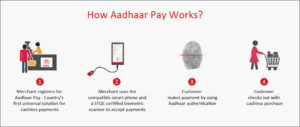Your Essential Shopping Guide for a Digital Commerce Gateway
Digital commerce is progressing rapidly and estimated to reach $4T (eMarketer) in 2020, fueled by a growth in payments and widespread adoption of smart phones. To fully capitalize on this opportunity, acquirers need an underlying payment processing engine that can support and grow in-line with rapidly evolving market and business needs. Financial Software and Systems provides a quick shopping checklist to empower acquirers chose the right underlying infrastructure and achieve their digital commerce goals.
Plug and play omnichannel payment processing
The future of payments is real-time, open and unencumbered by business and channel silos. As consumers become more sophisticated in their digital engagement with brands the Gateway needs to support the proliferation in new channels. For example, if a merchant’s target customers show high engagement levels on its social handles, allowing customers to make a purchase from Facebook or Twitter, without being redirected to a third-party payment website, can improve conversions and sales.
Payment acquirers need to effectively support merchants in their digitalization journey by taking the complexity out of the payments infrastructure and making it easier for them to access payment processing services without requiring them to know its ‘nuts and bolts’. A unified payment processing platform for transactions originating from any channel, — in-store. mobile, online, IVR – with support for a range of international and local payment methods can help merchants expand their business. Further APIs providing a “plug and play” environment to enable online payments and mobile SDKs to facilitate integration into existing native apps, accelerate time to revenue from weeks to a few days.
For acquirers, the ability to extend multi-channel support raises switching costs and helps ring-fence merchant accounts. Likewise, for merchants, the ability to consolidate customer payments under a single payment processor, simplifies service management by eliminating calls to multiple vendors as well as creates annual savings on processing feeds, transaction charges, and reconciliation management.
Supporting multi-instrument, multi-currency commerce
Whether it is to improve domestic sales or to achieve successful geographical expansion, the ability to support multi-currency commerce is the key. Domestic cards, for example, are widely used for payments in many European countries. An RBR study, Global Payment Cards Data and Forecasts to 2021, reported domestic schemes form 28% of total card spending across Europe, and more than 60% in Belgium, Denmark, France, Germany and Norway, countries where dual-badged debit cards are issued and used widely. Likewise, in India, Rupay forms 30% of all debit cards issued in the sub-continent. Another consideration is the number of currencies supported and an ability to offer customers an option to pay in their domestic or local currency.
Delivering optimized checkout experiences
Shopping cart abandonment rates, due to confusing and lengthy checkout processes, range between 10% and 30% across regions. Payment methods that involve redirecting a merchant’s customers to another app or a website to complete the payment fall in this category. Prolonged redirection time or an inconsistent look and feel, increase the potential likelihood of customers abandoning the transaction. Offering merchants, a white-labelled service they can brand greatly improves transaction completion time.
Furthermore, payment processes such as two-factor authentication or 3DS secure, introduce friction in the checkout process and limit the number of completed transactions. The ability to support frictionless checkout processes, for example debit and PIN, (which enables customers to use their ATM PIN for transaction authentication) adds noticeable speed and simplicity. Further support for recurring payments by storing payment credentials and executing payments “in the background” without a customer’s direct involvement optimizes the transaction experience.
On-demand scale to maximize transaction success
The demand for payment processing capacity is uneven and varies throughout the day. For example, in India, the Indian Railways, the largest e-commerce merchant in the sub-continent, experiences 5X the normal traffic in the “Tatkal” hour, (a short-term instant booking window for travel within 24 hours). Likewise, acquirers need systems to seamlessly process a large volume of transaction, especially during seasonal events like the back-to-school shopping season, Cyber Monday or Black Friday, without overprovisioning capacity. Such events present unique challenges and require careful peak capacity planning and provisioning. Hybrid deployment models enabling acquirers to purchase capacity on demand to service high-traffic bursts can help acquirers maintain a consistent quality of experience and do so at a reasonable cost.
The Gateway provider needs to support dynamic scaling and descaling of processing capacity on-demand, to enable smooth transaction handling during high-load periods. Furthermore, built-in capabilities such as intelligent transaction routing between acquirers helps load-balance traffic during periods of intense transaction density. Likewise, batch processing for offline transactions alleviates capacity constraints. Merchants can upload a file directly on the Payment Gateway, eliminating the repetitive and time-consuming process of sending each transaction individually. When the Gateway receives the batch file, it makes a single call to the network to get approvals on all the transactions at once.
Strengthening security to tackle evolving fraud risk
The freedom to pay anywhere, anytime, on any device comes with an increase in responsibility to secure customer sensitive payment data. Data security is a top priority and requires ongoing, iterative measures to stay ahead of fraudsters. Merchants lose money, but these incidents also eat away at customer trust and increase operational complexity.
In addition to mandatory PCI certification to secure the transaction environment, trusted Payment Gateway providers deploy tokenization technology and point to point encryption to shield against fraudulent activity. Tokenization is the process of substituting a customer’s PAN (Primary Account Number) with a “token” – information that is useless to a hacker. With person to person encryption, credit card data is encrypted from the moment the card is swiped, while the data is in transit, all the way to authorization; preventing a merchant’s system from ever seeing or touching the sensitive PAN data. Together, these security measures drastically reduce PCI compliance scope and costs.
Delivering unique revenue-generating, value-added solutions
Increasingly large-scale merchants are approaching digital payment capabilities as strategic to their overall customer engagement, rather than an essential cost of doing business. To capitalize on this opportunity, acquirers need to integrate adjacent business services and enable new functionality to lock-in merchants and grow their share of the business. Rather than deploy multiple standalone solutions, look for vendors with a breadth and depth of expertise to lower overall cost of ownership and speed time to market. Sophisticated vendors answer this call by helping acquirers deliver more value to their clients’ payment experiences. A suite of customizable, easy-to-integrate, added value capabilities including wallets, gift cards, data analytics and loyalty, can help merchants increase basket size and help processors differentiate their offerings.
Assuring 24/7 support for non-stop payments
In a digital world, payments never sleep. Slow service response or unplanned disruptions, even lasting a few seconds, can have an irreparable business and reputational fallout, triggering merchant attrition. To create differentiation by offering a higher level of merchant service, financial institutions must assess the payment processor’s global reach and breadth of expertise to provide world-class support as well as deliver an assured and consistent quality of service. A comprehensive set of service management tools and capabilities to proactively monitor transaction streams around-the-clock in real-time and identify and troubleshoot potential problems before they ever escalate into an actual event are crucial.
Transaction insights such as monitoring response time and correlating with abandonment rates, identifying heavy traffic merchant locations can aid decision makers make vital decisions that improve the speed, quality and reliability of service they can offer to merchants.
The list of priorities may vary based on target merchant demographic and stage of maturity of the acquiring market in a region. For instance, in highly competitive new growth markets, scale and pricing may be the most significant purchase consideration whilst added value services may be higher on the list in more mature acquire markets with high card and merchant penetration. FSS has proven credentials in offering licensed and hosted Payment Gateway services for leading financial institutions, Central Banks and forward-thinking merchants around the world.
By Suresh Rajagopalan, President Products, Financial Software and Systems


 In this article, Fraedom chief commercial officer Henry Pooley shares his top five tips to help banks get more value from their commercial card programme.
In this article, Fraedom chief commercial officer Henry Pooley shares his top five tips to help banks get more value from their commercial card programme.


 Before we get into the ‘smart’ bit, let’s recap. Tokenization is the security process that most recently unlocked the mobile payments market. All the major ‘OEM Pays’ (Apple Pay, Samsung Pay etc.,) use the technology to secure the transmission of payment data between device and terminal. The process itself however – of replacing sensitive data with unique identifiers which retain the essential information but don’t compromise security – can, in theory, be applied to any kind of transaction, from bank details, to health records, ID numbers – even to the idea of money itself.
Before we get into the ‘smart’ bit, let’s recap. Tokenization is the security process that most recently unlocked the mobile payments market. All the major ‘OEM Pays’ (Apple Pay, Samsung Pay etc.,) use the technology to secure the transmission of payment data between device and terminal. The process itself however – of replacing sensitive data with unique identifiers which retain the essential information but don’t compromise security – can, in theory, be applied to any kind of transaction, from bank details, to health records, ID numbers – even to the idea of money itself. The commercial card sector is growing strongly within a flourishing B2B payments market. Many banks recognise the opportunity that offering commercial cards to clients represents to grow revenues and enhance customer experience. However, there is more potential in commercial card schemes than end-user convenience and provider banks need to understand this by enhancing the technology used to support these schemes.
The commercial card sector is growing strongly within a flourishing B2B payments market. Many banks recognise the opportunity that offering commercial cards to clients represents to grow revenues and enhance customer experience. However, there is more potential in commercial card schemes than end-user convenience and provider banks need to understand this by enhancing the technology used to support these schemes. Entitled. Lazy. Narcissistic. Me, me, me. If you threw those descriptors at anyone on the conference circuit in finance today they’d know exactly what you were talking about. “Millennials”, the tagline that’s a gift that keeps on giving for speakers and strategists. Banks “need” to target Millennials, they say. Give them selfie-pay, give them emoji-themed UIs, give them “bae” and “fleek” and watch them flock to your brand.
Entitled. Lazy. Narcissistic. Me, me, me. If you threw those descriptors at anyone on the conference circuit in finance today they’d know exactly what you were talking about. “Millennials”, the tagline that’s a gift that keeps on giving for speakers and strategists. Banks “need” to target Millennials, they say. Give them selfie-pay, give them emoji-themed UIs, give them “bae” and “fleek” and watch them flock to your brand.